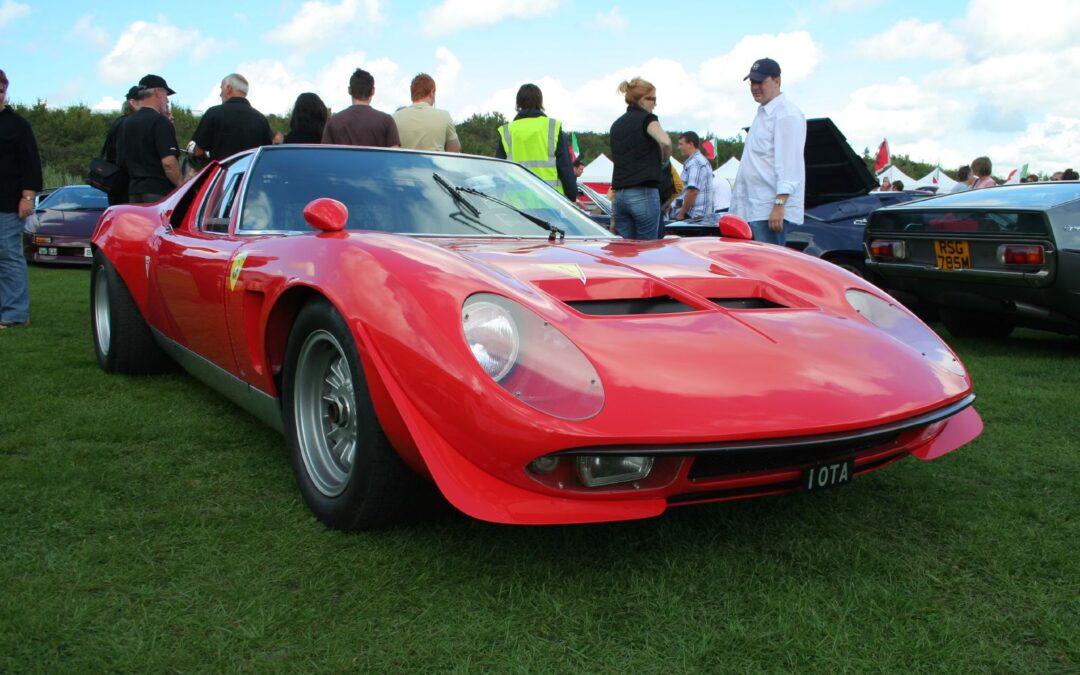In the annals of automotive history, few cars possess a mystique as profound as the Lamborghini Miura. But within this legendary lineage, one name stands out for its tantalizing blend of performance, innovation, and tragedy: the Miura Jota. This one-off test mule, built by the brilliant development driver Bob Wallace, was a testament to what Lamborghini was truly capable of, even though the company’s founder, Ferruccio Lamborghini, famously refused to enter the world of motorsports.
The story of the Jota begins in 1970. While company founders Giotto Bizzarrini and Gianpaolo Dallara had departed after Ferruccio’s steadfast refusal to go racing, chief technical officer Paulo Stanzani and Bob Wallace remained. Stanzani gave Wallace the green light to create a track-focused Miura, a project Wallace would undertake in his own time. The goal was to build a car that would conform to the FIA’s Appendix J racing regulations, hence the name “Jota.”
Wallace’s modifications were extensive and transformative. The most significant change was a dramatic reduction in weight. He replaced steel chassis components and body panels with a lightweight aluminum alloy called Avional, and swapped out the side windows for plastic. These changes resulted in a car that weighed approximately 800 lbs (360 kg) less than a production Miura. The Jota’s exterior also received a front spoiler and fixed, faired-in headlights, and the single large fuel tank was replaced with two smaller, sill-mounted units.
Under the skin, the Jota was a different beast altogether. The suspension was reworked, and the car was fitted with wider (9″ front, 12″ rear) and lighter wheels shod with low-profile Dunlop racing tires. The engine was heavily modified to produce between 418–440 bhp (312–328 kW) at a staggering 8800 rpm. This was achieved through an increased compression ratio (from 10.4:1 to 11.5:1), altered camshafts, electronic ignition, a dry-sump lubrication system, and a less restrictive exhaust. This combination of a powerful engine and a lightweight body meant the Jota could rocket from 0-62 mph in just 3.5 seconds and reach a top speed of 190 mph. Its specific power output was an impressive 110 bhp per liter—a remarkable achievement for a naturally aspirated engine of the era.
Despite its incredible performance and track-ready design, the Jota never raced. After extensive testing by Wallace, it was sold to a private buyer in 1971. Tragically, the car’s life was cut short when it crashed on an unopened ring road around Brescia and was completely destroyed in the ensuing fire.
The legend of the Jota, however, lived on. Its destruction led to a demand for similar cars, and Lamborghini itself created a limited run of “SVJ” replicas. While these cars borrowed some of the Jota’s styling cues, they were not as highly developed and were far more civilized. The legend also inspired other one-off creations, including the “Millechiodi” and a meticulously crafted tribute built by a passionate enthusiast named Piet Pulford. This recreation, built with the help of Bob Wallace himself, took 15 years to complete and is considered to be a near-perfect facsimile of the original Jota

